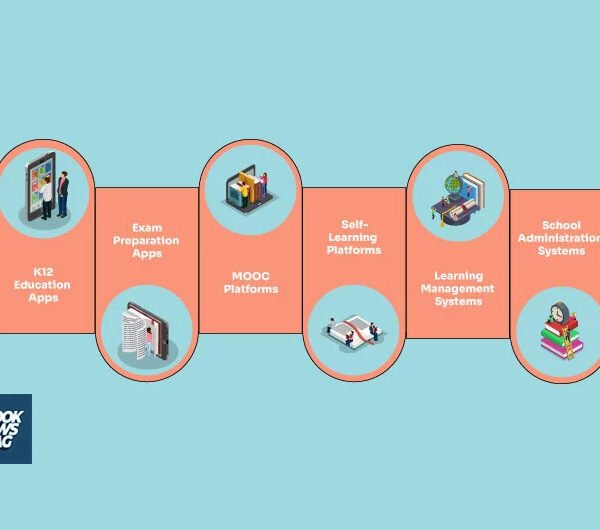How to Choose the Right App for Your Needs: A Guide to App Categories and Discoverability
The modern world is now driven by apps more than ever before. There are millions of apps available across app stores and platforms, catering to a wide range of needs. From productivity to gaming and healthcare to e-commerce, apps have become deeply embedded into our day-to-day lives.
However, with so many options to choose from, finding the right app that perfectly matches your requirements and preferences can be an overwhelming task. This comprehensive guide focuses on understanding your needs, leveraging app categories for visibility, optimizing app store discovery, comparing platforms, researching options, and balancing ease of use with control. Follow this step-by-step process to identify and select the ideal app tailored to your needs.
Defining Your Personal or Business Needs
The first step to picking the perfect app is to clearly define your needs and intended purpose for it. Consider important factors like:
- Target audience – Who will use this app? Understanding user demographics and preferences is key.
- Main features and functionality – List down the absolute must-have capabilities you need in the app.
- Budget constraints – How much can you invest in development and post-launch maintenance costs?
- Timelines – Do you need an MVP quickly or is your schedule flexible?
- Future growth plans – Will you eventually need to scale app capacity and features?
Having clarity on these fundamental aspects will help you narrow down options and zero-in on apps that check all of your requirement boxes, keeping current needs and future plans in mind.
The Role of App Categories for Discoverability
Once your app is ready for launch, the right category selection is vital for its discoverability across app stores. Assign inaccurate categories, and your app risks getting buried under millions of search results and disappearing into obscurity. But optimized categories? Now that gives your app a fighting chance to get found among fierce competition.
Choose Primary and Secondary App Categories Carefully
Every app store lets developers pick primary and secondary categories during app submission. Make these choices count. Primary categories in particular have a big influence on ranking during user search. If chosen poorly, no amount of downloads or positive ratings can make up for the impact of low discoverability.
For the best shot at visibility, make sure your selected category precisely matches app functionality. If you have any room for doubt, pick more granular sub-categories as primary fields, even if they have lower search volumes. An accurately assigned niche sub-category beats broader but unsuitable primaries.
Secondary categories work the same way. Leverage them to highlight additional capabilities, features or content types that make your app unique. Cover all bases through a thoughtful category selection process.
👉 Pro Tip: Rope in a few objective users for feedback on category suitability before finalizing selections. An outside perspective helps spot inaccuracies you may have overlooked.
Frequently Analyze Category Rankings
Discoverability is a dynamic game, with category trends continuously evolving. Regularly check ranking within assigned categories and monitor download volumes. If ranks are consistently sliding despite positive user feedback, or download rates remain stagnant, reassess selected categories.
Stay updated on category definitions and new additions by app stores as well. A more fitting category may have surfaced over time that better represents your app’s offerings. Don’t hesitate to switch even if it means starting back at a lower ranking. Accurate categories that truthfully reflect app capabilities trump higher ranks in unsuitable or irrelevant categories every time.
Through attentive category management as outlined above, your thoughtfully designed app will get the best shot at being found by people who need it the most – your target users.
The Art and Science of App Store Optimization (ASO)
But app store visibility does not depend on categories alone. That’s where ASO comes in – short for App Store Optimization. This encompasses fine-tuning multiple elements that influence app ranking during search. From striking app titles and persuasive descriptions to relevant keywords and eye-catching visuals, ASO relies on researching target user behavior and meticulously incorporating those insights across app store listing components.
Let’s break down key ASO focus areas:
Craft Catchy Yet Informative App Titles
An app’s title is the very first thing users see during store searches. It needs to immediately grab their attention clearly communicate core capabilities. Strike an artful balance between being catchy and being descriptive. For instance, “ZenDNA – DNA Analysis Lab” is far more informative though a bit dry. Whereas just “ZenDNA” is catchier but gives no clue regarding app functionality. An optimized pick would be “ZenDNA – DNA Testing Lab”.
Titles can be up to 30 characters, so make every letter count. Include vital keywords like industry, services offered or technology used. Weave these organically into titles for optimal ASO without stuffing or over-optimization.
Write Engaging App Descriptions
Well-written copy converts browsers into downloaders. So app descriptions merit significant ASO focus. Follow best practices when drafting persuasive descriptions:
- Highlight differentiating value: What makes your app special? Lead descriptions with this rather than generic features.
- Focus on benefits: Use second-person language explaining exact user gains from the app.
- Include relevant keywords: Work target keywords into flowing, conversational description text.
- Keep it scannable: Use ample paragraph spacing and visual hierarchy including headers, bullet points etc.
- Optimize for length: About 4000 characters is ideal. Evaluate character count across varying devices.
- Call users to action: End with a clear CTA nudging users to download.
Research Relevant, High-Traffic Keywords
Keyword optimization underpins multiple ASO focus areas above, playing a pivotal role in discoverability. Extensive initial research is key to unearthing highest potential search terms and closely related keyword variations.
Analyze competitor keywords for a starting reference point before widening the research aperture. Look beyond immediate competitors too for keyword opportunities. For instance, a guided meditation app would gain keyword inspiration from fitness trackers as well as mindfulness journals.
Uncover keyword ideas from related app store categories, Google Keyword Planner, SEO tools, target user discussions in community forums & social media, influencer content and more. Identify frequently used verbs, benefits sought and descriptive adjectives for extensive keyword opportunities.
Optimize Visual App Presence
Visually appealing iconography and screenshots offer crucial first impressions regarding app quality and reliability. Invest in a professionally designed icon that looks crisp and distinctive at tiny dimensions. Feature-focused screenshots grab attention, especially ones displaying app USPs.
Ensure visuals seamlessly represent app functionality and user persona through:
- Icon symbolism: Icons often incorporate imagery representating app purpose e.g. a heart icon for a health tracker.
- Lively screenshots: Showcase UX and benefits through clean, uncluttered demo visuals with sparse captions.
- Responsiveness: Account for varying display sizes by providing screenshots for different devices.
Thus ASO significantly amplifies the discoverability potential for your app, pushing it higher up the visibility food chain. But it does require extensive initial effort plus vigilant ongoing optimization. Treat ASO as a long-term visibility strategy rather than a one-time checklist.
iOS or Android? Evaluating Key Platform Differences
The two dominant mobile ecosystems today are iOS and Android, together commanding almost complete global smartphone OS market share. So chances are, you’ll be launching your app on at least one if not both eventually. When embarking on development, carefully weigh key parameters differently influencing iOS and Android launches – from costs and time investments to target demographics and app testing nuances.
Development and Launch Cost Differences
Apple’s rigorous vetting processes contribute to typically higher iOS launch costs versus Android:
- Extended timelines: App testing and approval times by Apple generally take longer compared to Google Play.
- Walled ecosystem: Creating an Apple developer account to even gain app submission access involves a $99 annual fee.
- Fee per launch: Individual app releases also cost at least $99 on iOS while Android uploads are free.
- Input intensity: iOS apps usually need more visual asset inputs like custom icons and demo videos.
That said, iOS users have repeatedly shown higher willingness to pay for apps over Android users. So factor in potential monetization ability before finalizing primary platform choice.
Target Audience Platform Preferences
User loyalty and spending patterns often vary across platforms. For instance:
- Android devices dominate key APAC markets like India and China.
- Apple enjoys fierce loyalty among creatives and high-income professionals in the US.
Thus your target demographic could significantly influence platform prioritization for development and launch.
App Testing and Updates
While both platforms utilize automated and human testing, the review process differs:
- Google Play relies more on algorithm-led app checks enabling faster approvals.
- In contrast, App Store submissions involve extensive manual verification causing longer review times.
Updating existing apps follows similar dynamics. Android allows pushing updates directly to users upon completion. But iOS updates need re-review leading to longer release cycles.
These key differentiators between the iOS and Android platforms impact important decisions like time and budget planning, defining technical scope, and addressing performance considerations. Carefully evaluate all dimensions from your specific context before deciding on primary platform selection.
In most cases, businesses find maximum value by eventually launching across both ecosystems, even if through a phased approach. This allows efficiently accessing the broadest user base encompassing iOS devotees and Android loyalists, besides flexible users indifferent to OS preferences.
Research Extensively Before Finalizing an App
While app store rankings, ratings and reviews offer preliminary indicators, comprehensive research is vital before picking any app for personal or business use.
Look Beyond Spec Sheets – Test Functionality
Rather than assessing apps on face value, directly test out the experience by downloading shortlisted options. Evaluating first-hand through an on-device experience reveals actual sophistication and ease-of-use.
Examine if purported features translate smoothly into real-world usage or only seem impressive on paper. Test execution also uncovers micro-interactions and UX nuances influencing overall experience but not discernible without hands-on evaluation.
Weigh Both Positive and Negative User Reviews
Comb through user reviews sorting by recency and relevance. Check what users specifically praise along with consistent complaints or suggestions to fix. Look for any glaring gaps between marketed capabilities and real-world reviews.
Watch out for suspicious 5-star reviews that seem inorganic too. Small developers rarely have the marketing budget for paid reviews, but larger brands sometimes resort to manipulative tactics that falsely inflate positive ratings. Thus reviews merit careful scrutiny before deciding.
Compare Integration Capabilities Across Solutions
Review if apps support integration with external programs and services relevant to you through APIs and connectors. While such technical capabilities may not impact general users, they hugely influence decisions for business or enterprise app selection scenarios.
For instance, marketing automation tools like email services, CRM and payments systems often need integration with marketing apps. Evaluate if shortlisted solutions easily pair with required adjacent systems or rely on unwieldy workarounds.
Through an exhaustive discovery and diligent comparison process eliminating assumptions, identify the optimal app aligned to requirements.
Achieving the Right Balance of Control and Ease
Across personal and professional apps alike, elegantly balancing sophisticated control with intuitive simplicity separates the best from the rest regarding UX.
Overly complex interfaces slow down workflows while limiting functionality frustrates power users – so getting user experience just right is an art. Let’s examine hallmarks of elegantly balanced apps and how they get it right by design:
Enable Personalization for Control
Cleaner data visualization, customizable alerts and collaborative annotation empower users with smarter data analysis without complicating interfaces or workflows.
For example, analytics platforms achieve granular control via intuitive custom dashboards rather than dense onwards menus. By rearrange panels and metrics as needed without toggling between views, flexibility unlocks richer insights without impeding ease.
Structure Multi-layered Navigation
Well-planned navigation hierarchy ensures the right controls sit just a click away without overwhelming interfaces. Core functions remain accessible on the surface while additional capabilities can be accessed whenever needed through drill-downs.
For instance, Canva’s homepage itself contains adequate controls for basic design creation. While the toolbar expands to reveal advanced functionality of image editing, layout tools or animation for more involved creative projects on demand.
Implement Progressively Enhanced Prompts
Contextual cues, hover tips and unobtrusive tours guide users working through complexity without disrupting flow. Unique user attributes also dynamically trigger prompts – so amateurs and seasoned users glean assistance suited to their expertise.
For example, Loren Ipsum’s AI writing assistant shows step-by-step guidance for first-time generators. While the same interface offers predictive recommendations to seasoned users for accelerated drafting minus interruptions.
Thus when designed intentionally, apps successfully couple depth with delight – blending extensive configurability for experts with thoughtfully presented features welcoming casual users. Structure navigation and prompts in user-centric ways that evolve along learning curves for satisfying experiences across user sophistication levels.
Key Takeaways: Choosing the Right App for Your Goals
Picking the perfect app amidst endless options can feel overwhelming without a structured approach. By focusing on core user needs, optimizing discoverability, researching diligently and balancing simplicity with custom controls, identify solutions truly matching requirements among marketplace clutter.
Consider the target demographic, budget and timelines along with must-have functionalities. Select accurate app store categories supporting visibility for potential users seeking those features. Boost discoverability further through continual ASO optimization across titles, descriptions and visuals based on targeted keywords.
Weigh app platform advantages relative to audience preferences and business goals. Extensively test shortlisted apps, poring over both positive and negative reviews. Compare integrations capabilities too matching ecosystem needs.
Strike the right balance between simplicity and depth by enabling personalization without unnecessary complexity. Guide users with contextual enhancement so interface interactions evolve intuitively along learning curves regardless of expertise levels.
By following this comprehensive step-by-step process, identify the ideal app tailored specifically to your individual or business needs among the hundreds of options available. Achieve stated goals with solutions allowing customization yet easy to implement so that adoption is maximized across target users.









